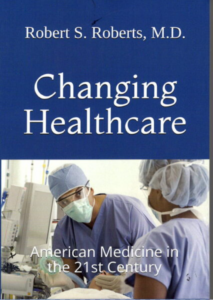
Americans pay more for healthcare than any other developed country in the world. What’s more, the cost of healthcare is rising faster than nearly every other measure of the U.S. economy.
Lawrence Wilson, writing for The Epoch Times, tells us the National Health Expenditure—the total amount paid for health care through public and private means—has risen faster in recent decades than inflation, household income, gross domestic product (GDP), the population, and even the price of housing. Americans collectively spent $4.9 trillion on health care in 2023, six times more than on national defense. No other country spends this much. As a percentage of GDP, the United States spends one-third more than Germany and France and more than double what China spends.

You might say it’s worth it if we are the healthiest people in the world, but we’re not. Americans are not healthier than people in comparable nations, according to leading health care indexes, and they do not live as long. “We’re wealthy but sick,” Jackson Hammond, a senior policy analyst at Paragon Health Institute, told The Epoch Times.
The American health system is complex, so there are multiple reasons for rising costs. Chief among them is the increasingly poor health of the population, according to experts. Americans spent an average of $1,500 apiece on out-of-pocket medical expenses in 2023. That’s $6,000 for a family of four. But that’s the tip of the iceberg. Total spending was 10 times that amount: $14,570 per person, more than $58,000 for a family of four.
Some of that money came from employers who paid all or part of employee health insurance premiums and from other third-party payers. But most came from taxpayers. Federal, state, and local governments contributed more than half of the dollars spent on health care in the United States. The federal government spent more than $1.8 trillion on health care in fiscal year 2023. The budget deficit was $1.7 trillion that year. Most health care dollars, 51 percent, went to hospitals and outpatient providers such as doctors and laboratories. Prescription drugs accounted for about 9 percent.
Spending has increased rapidly. Out-of-pocket spending grew by 7.2 percent in fiscal year 2023. Payments for hospital services increased by more than 10 percent, and prescription drug spending increased by 12 percent.
What is driving up the cost of healthcare?
Americans are older and sicker than they were even 30 years ago, which has driven spending increases. “A significant percentage of the American population has a chronic condition,” Orriel Richardson, executive director at Morgan Health, told The Epoch Times.
Chronic conditions are very costly, Richardson said, because of the increased number of doctor visits, medications, and other treatments they require, often for a lifetime. Many of these diseases are brought on or worsened by lifestyle factors beginning at a young age, according to Reyn Archer, a physician and former congressional chief of staff.
The United States leads the developed world in deaths from diabetes, as well as deaths from chronic liver, kidney, and respiratory diseases, according to Peterson-KFF’s Health System Tracker. The U.S. population is also aging. The median age in 1960 was 29, with just 9 percent of the population being 65 or older. In 2023, the median age was 39, and 18 percent of Americans were 65 or older.
New treatments are often expensive. New medications are currently driving overall costs up, according to Richardson.“ The cell and gene therapy world [gives us] a greater number of personalized, high-tech science that could be really successful,” she said. “But you have to pay for it.” That includes drugs such as Ozempic and Rybelsus, which are approved for treating Type 2 diabetes in the United States, and Wegovy, which is approved for weight loss.
A one-month supply of Wegovy was priced at $1,349 as of March 2024, according to KFF. Medicare payments for three drugs in this category rose from $57 million in 2018 to $5.7 billion in 2022, a 1,000 percent increase in five years. More than 11 percent of U.S. adults have diabetes, and more than one-third are obese, according to the National Institutes of Health. Some 17 percent of American children are obese also.
Unintended Consequences of Legislation
Given the complexity of the U.S. health care system, small adjustments, however well intended, can bring unintended results. Experts often cite the Medical Loss Ratio (MLR) as an example. The MLR is a provision of the Affordable Care Act (ACA)- better known as ObamaCare- intended to limit insurance company profits. It specifies the percentage of premiums an insurer can retain for administrative costs and the percentage that must be paid for medical services. For a large group insurance plan, an insurer must pay 85 percent of the money it receives to health providers or refund it to customers.
“With the MLR, one of the only ways for insurers to make more money is to spend more on health care, which then inevitably raises premiums,” Hammond told The Epoch Times. The average premium for family coverage increased by 22 percent from 2018 to 2023 and by 47 percent since 2013. The ACA was fully implemented in 2014.
This is a far cry from the famous promise President Obama made that ObamaCare would “save every American family over $2500 per year.” In reality, ObamaCare drove up healthcare costs by mandating that every insurance policy cover procedures that not everyone needed – like mammograms for men and prostate exams for women. This “one size fits all” legislation contributed much to the rising costs of healthcare in America.

